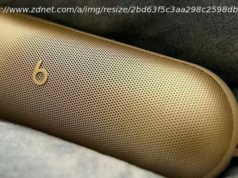The Razer Phone had a great screen, strong speakers, powerful performance, but a mediocre camera, no water resistance, and a high price. With the Razer Phone 2, Razer has improved on the predecessor in every way — from wireless charging and an IP67 body to much improved camera hardware and software.
What makes a “gaming” phone? It needs the power to play the latest mobile games with ease, with enough battery capacity and cooling to keep the fun going. Throw in a great screen, spectacular sound, simple-to-use software, and you have a winner, right? Almost. That was the Razer Phone. It fell short of being great because of its mediocre camera performance, especially when compared to the competition in its $700 price range.
A good camera and features like IP67 water resistance aren’t optional anymore. After all, this is still a phone – it needs to play games in addition to everyday tasks like snapping photos at a birthday party, not instead of them. Razer now understands all of this, and the camera in the new Razer Phone 2 has been the focus of improvement. But we’re sad to say it’s still not good enough — especially for the higher $800 price tag. You’re spoiled for choice, and while the Razer Phone 2 nearly lands at the top of the leaderboard, its camera knocks it down a few pegs.
Editor’s note: Razer is issuing an over-the-air update it claims will address camera image quality and performance, as well as fix the display issue we encountered. We will update this review after further testing.
What do most flagship phones in 2018 have in common? Glass backs. It’s why even budget phones have glass on the back; it feels premium, even if it doesn’t offer any utility. But glass on most high-end phones does have purpose: The convenience of wireless charging, which doesn’t work with a metal back.
That’s precisely what Razer has done with the Razer Phone 2. You can place the phone on a Qi wireless charging pad to juice it up, which certainly is convenient, and Razer is selling a 15-watt wireless charging stand as a separate accessory (for $100).
We haven’t been able to test Razer’s wireless charger yet, but we have had some trouble with alternative wireless chargers, specifically wireless charging stands. The coil on the Razer Phone 2 is quite low, and the phone wouldn’t juice up on chargers like Google’s Pixel Stand or Samsung’s Wireless Charger Duo. Switching it to landscape mode worked, though it wasn’t ideal. Flat wireless chargers are a safer option, if you’re not opting for Razer’s own.
Wireless charging is convenient and all, but glass does take points away for durability. The original Razer Phone felt like a tank; you could drop it and there’d hardly be a dent on the back. Now, you’ll want to slap on a case to protect the beautiful Gorilla Glass 5 exterior.
Without a doubt, the glass back immediately delivers a more sophisticated look for the Razer Phone 2, and the darker black color helps make the Razer logo pop. It’s an RGB light now, and with the pre-installed Chroma app, you can make the logo glow whatever color you want, and even choose a pattern like “breathing” for a pulsating effect.
It can even change color based on incoming notifications: An incoming Gmail will turn the logo red, for instance. These colors are set by the app developer, and aren’t customizable. The RGB logo is a fun addition that makes the phone look stunning — especially in the dark — but we often don’t place our phone with the screen facing down, so we hardly get to admire its beauty or see these notification alerts.
The dual-camera module on the back is now centered above the Razer logo, with a flash in between both cameras. That’s about it in terms of flourishes, except for all the fingerprints you’ll leave behind thanks to the glass.
From the front, the Razer Phone 2 looks exactly the same as its predecessor. The speaker grills flanking the display are just as massive, and the screen has the same 5.7-inch size. The power button on the right doubles as a fingerprint sensor — it’s still hidden in the aluminum frame — and the volume rocker is comprised of two circular buttons on the left edge.
Razer’s doubling down on the angular look, and we’re fans. It’s sharp, like James Bond in a tuxedo, and the flat edges deliver an excellent grip that ensures this phone never slips out of your hands. We like the difference in texture, going from the matte black aluminum edges, which is cool to the touch, to the even cooler glass back. It’s a big phone, but it’s not an edge-to-edge screen, so we were still able to reach all parts of the screen with one hand — we have larger hands though, so your mileage may vary.
The 5.7-inch LCD IGZO screen supports HDR10 content, and the stereo speakers have Dolby Atmos certification — this is a phone meant to entertain. The screen is sharp with its 2,560 x 1,440 resolution, and the 120Hz refresh rate makes a return. More frames per second means fast-paced games look smoother, and scrolling around in apps like Instagram, Twitter, and the general Android operating system feels more fluid and responsive. It is the sole reason to buy this phone? No, but it’s a great perk.
The screen is colorful, but blacks don’t look as deep as an OLED screen would offer. That being said, Razer has managed to make the screen 50 percent brighter, and the difference is stunning — when compared with the original Razer Phone. Dark scenes in Black Panther were far easier to see on the Razer Phone 2 over its predecessor. When compared next to the iPhone XS Max, YouTube clips in general were a tad brighter and more colorful on the iPhone thanks to the stronger contrast, but the Razer held up. But we found some startling results in the Netflix app — shows and movies looked positively dark on the Razer Phone 2. We were able to see scenes much more clearly on the iPhone, but we were struggling on the Razer Phone 2. The company told Digital Trends an upcoming over-the-air update should fix this issue, and we’ll update this review when we can confirm it.
In normal use, we had no issues with brightness, and we can see the screen outdoors in sunny conditions, though we had to crank the brightness to the max. Despite the Netflix bug we encountered, this screen is a great improvement.
The speakers may look the same, but Razer said there’s now a much larger speaker box for improved sound output and bass response. It’s easily the best speaker system on a smartphone. We compared it with the Google Pixel 3, the iPhone XS Max, the Galaxy Note 9, and the LG V40’s Boombox speaker, and the Razer Phone 2 sounds the most balanced and rich. The competition can get just as loud, but they all sound tinny and muffled, whereas the Razer Phone 2 offered more dynamic audio. It’s excellent.
One of the biggest hurdles with the Razer Phone 2 was finding a way to make the phone IP67 water resistant without sacrificing the speaker grills on the front, but the company succeeded. You can take this phone underwater up to a meter for 30 minutes, and it’ll perform without a problem afterwards.
There’s no headphone jack, but Razer includes a THX-certified 24-bit Digital-to-Analog Converter (DAC) in the box. You can use with wired 3.5mm headphones, and it sounds good. The company is also offering a pair of USB Type-C earbuds with active noise canceling, but they’re sold separately.
The Razer Phone 2, like many other Android flagships, is powered by Qualcomm’s Snapdragon 845 processor, but it packs a massive 8GB of RAM. Whether that much RAM is necessary is debatable, but we’ve yet to run into any problems with performance here.
We played games like Dragon Ball Legends, Gear. Club, ARK: Survival Evolved, and Alto’s Odyssey at 120Hz and at the highest graphical settings, and the Razer Phone 2 never stuttered one bit. The phone got warm on the back, but we managed to game for a little more than an hour, and performance still never slowed down. Credit the new Vapor Chamber cooling system, which is a paper-thin sheet that sits in the middle of the phone, and helps spread heat across the entire surface of the phone. Razer claims you should hardly see any kind of performance throttling, and we haven’t.
Here are a few benchmark results:
The Razer Phone 2’s AnTuTu score is right below Sony’s Xperia XZ3, which makes it the second highest performing Android phone in our benchmark tests (Apple’s iPhones are still higher). It’s safe to say you shouldn’t expect any problems throwing all sorts of tasks to this phone.
Razer is continuing its partnership once again with the developer of popular third-party launcher, Nova Launcher. That means you’re getting a close to stock Android experience, with a simple-to-use Android launcher that’s deeply customizable.
The only other pre-installed apps are from Razer, like Chroma, which lets you change the colors of the logo on the back of the phone. There’s also Razer Cortex, which is a game launcher akin to Nvidia’s GeForce Experience Windows app. Razer’s website lists a great deal of games that support the 120Hz screen, but the Cortex app only shows a handful — we’d like more choices and variety in the Cortex store.






